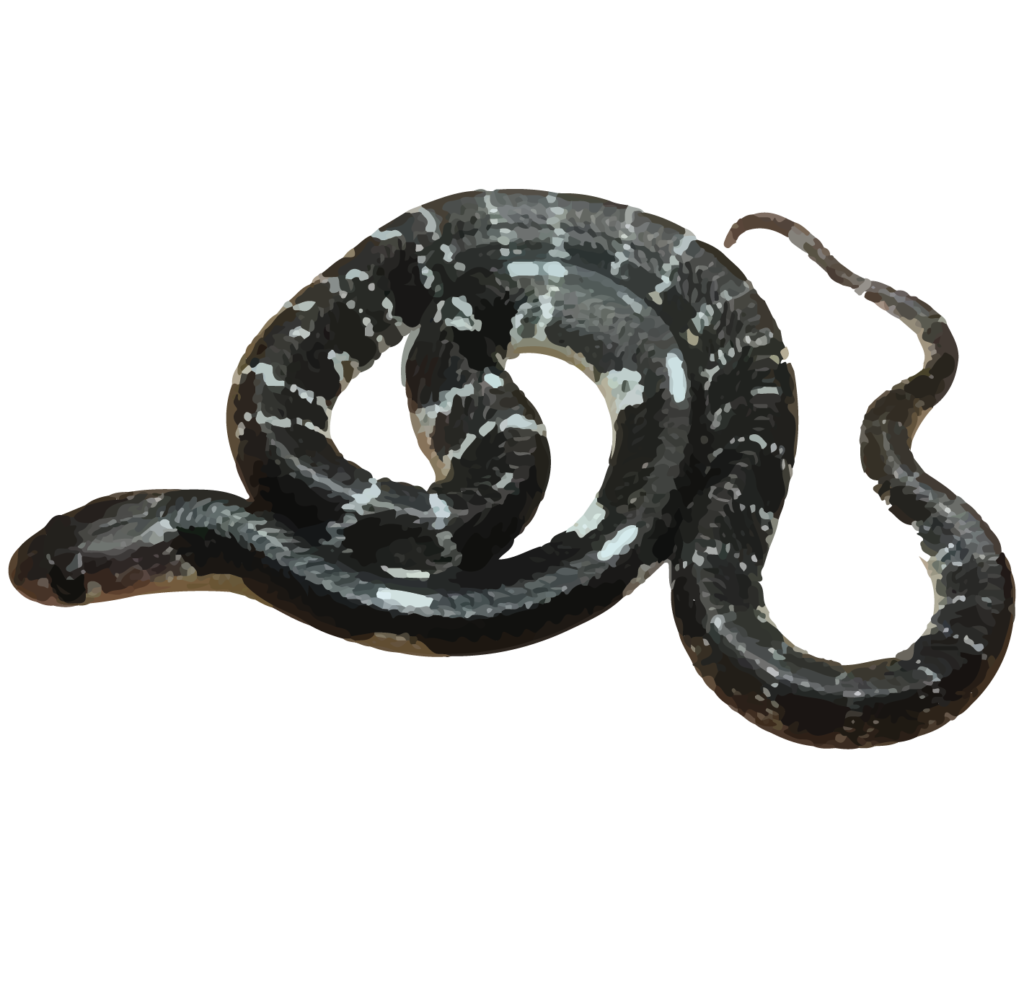Common Krait (Bungarus caeruleus)

- Local/Regional name: Bengal Krait
- Habitat: Fields and low scrub jungle to settled areas, termite mounds, brick piles, rat holes and even inside houses.
- Distribution: Rajasthan, Gujrat, Mahrashtra, Uttar Pradesh, Bihar.
- Diet: Rodents, frogs, other snakes and lizards.
- Size: 0.9 to 1.75 metres
The common krait (Bungarus caeruleus) is a highly venomous snake found in the Indian subcontinent. Known for its potent neurotoxic venom, the common krait is one of the “big four” snakes responsible for the majority of snakebite cases in India. Here are some detailed points about this species:
Physical Characteristics
- Size: Common kraits typically grow to about 1 to 1.5 meters (3.3 to 4.9 feet) in length, though some individuals can grow longer.
- Appearance: They have a slender body with smooth, glossy scales.
- Color: The body is typically black or bluish-black with white or pale yellow bands. The bands are more prominent towards the posterior part of the body and can be absent or faint in the anterior part.
Habitat
- Geographical Range: The common krait is found throughout India, Pakistan, Bangladesh, Nepal, and Sri Lanka.
- Environment: They inhabit a variety of environments including forests, fields, and human settlements. They are often found near water sources and can thrive in both rural and urban areas.
Cultural Significance
- Symbolism: While not as prominently featured as cobras, kraits are still recognized in local folklore and are often regarded with a mix of fear and respect.
- Mythology and Folklore: In some cultures, they are believed to have supernatural powers or are seen as omens.
Conservation Status
- Threats: The primary threats to common kraits are habitat destruction, road mortality, and killing by humans due to fear.
- Conservation Efforts: Conservation efforts are focused on habitat preservation and reducing human-snake conflict through education and awareness programs.
